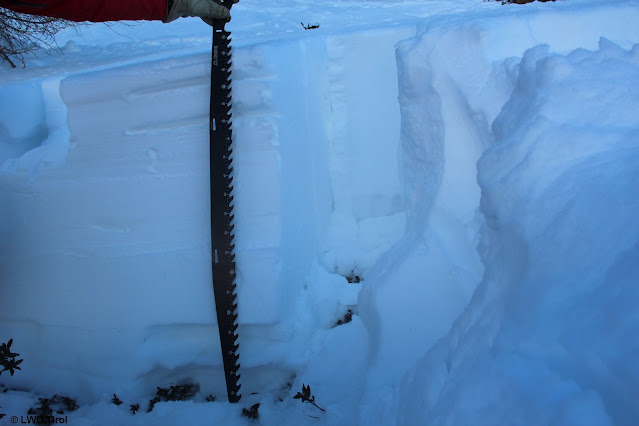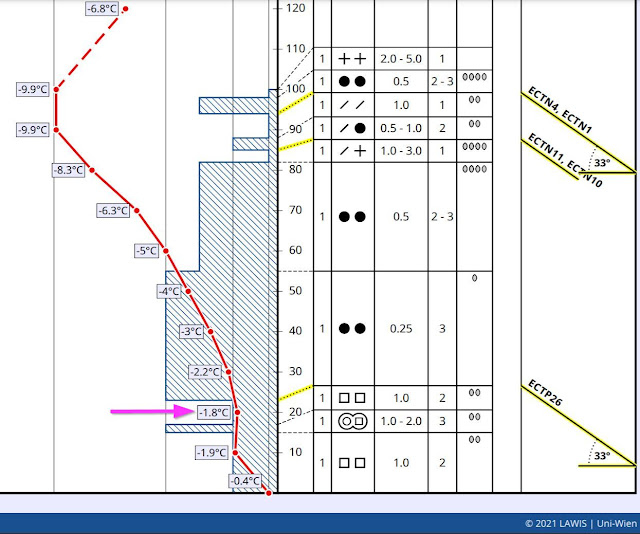Course of events and Avalanche facts
Today (12.12) we were at the scene of the accident together with the Alpine Police and other experts. The research of the Alpine Police resulted in the following course of events:
Six youths descended three times orographically left of the subsequent avalanche, quite near the secured ski slope in successively flatter backcountry terrain. During their fourth descent just before 12:00 they traversed a very steep north-facing slope. In the middle of very steep to extremely steep terrain, they came to a halt, one after another. When the last two persons of this group skied to the meeting spot, a slab avalanche triggered above them. All of them were caught in the avalanche. While one person managed to ski (orographically right) out of the avalanche, the others were swept along. Four of them were buried partially, one of them totally.
The avalanche was observed by other winter sports enthusiasts. They professionally alarmed the authorities without delay and immediately initiated a search for the buried skiers.
Two of the partially buried persons suffered injuries and were flown to the Zams hospital. The totally buried person was found after one and a half hours of intense search, lifeless.
The avalanche was 280m long, 70m wide and had an average fracture depth of about 50cm (maximum 140cm). The fracture zone was at 2140m. The slope had a 40° steepness gradient (extremely steep) and faced north.
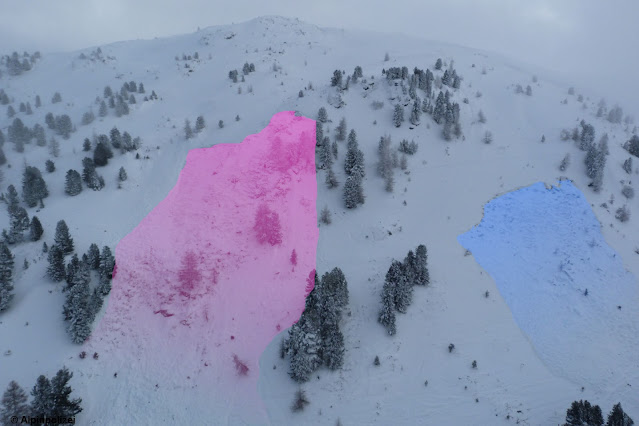 |
| An additional Alpine Police overview on 11.12.2021 |
 |
| Fracture zone of the avalanche. Visible at upper left, a part of the avalanche fracture. The steepness of the slope is also evident. (photo: 12.12.2021) |
 |
| At the fracture, which extended to ground-level layers. Right, a shallow, recently formed snowdrift accumulation. (photo: 12.12.2021) |
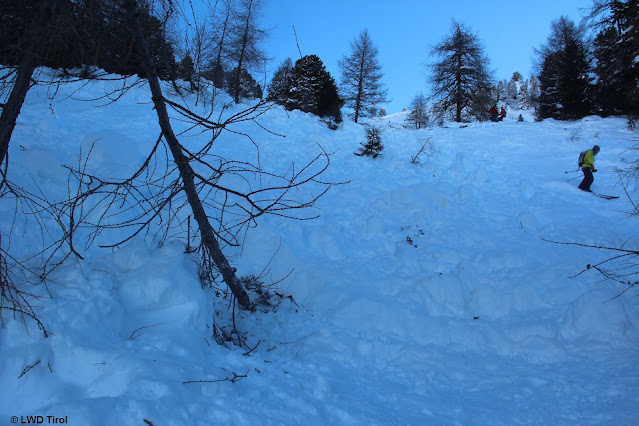 |
| Next to the small larch tree the lifeless youth was found. (photo: 12.12.2021) |
Snowpack analysis
Our snowpack analysis confirmed a combination of snowdrift problem and persistent weak layer which we presumed was the cause (see yesterday’s blog). The persistent weak layer had a thoroughgoing, often pronounced weak streak of loose, faceted crystals which caused the magnitude of the release. The relevant weak layers formed during a period of beautiful weather in November.
What was striking - and this was also demonstrated in snowpack analysis in other parts of the land - was that where the snow was shallow, the weak layers were more pronounced and more prone to triggering than where the snow was deep. In the shallow-snow zones, far less additional loading is necessary to unleash an avalanche.
 |
| Profile of a shallow-snow zone orographically left of the avalanche fracture. A crust-sandwich with loose layers in between. On top, a snow mass showing wind impact. (photo: 12.12.2021) |
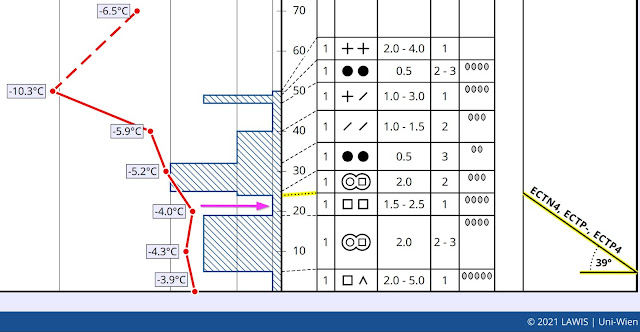 |
| Snow-profile for the above photo. Arrow points to the weak layer of faceted crystals which was extremely easy to trigger. |
THE BOTTOM LINE:
Slab avalanches can still be triggered in weak layers, particularly in spots where the snow is shallow and in transition zones from shallow to deep snow. Consolidation of these layers is currently taking place only very slowly. In the immediate future, nothing will change in this complex and difficult-to-assess avalanche situation above the timberline.

